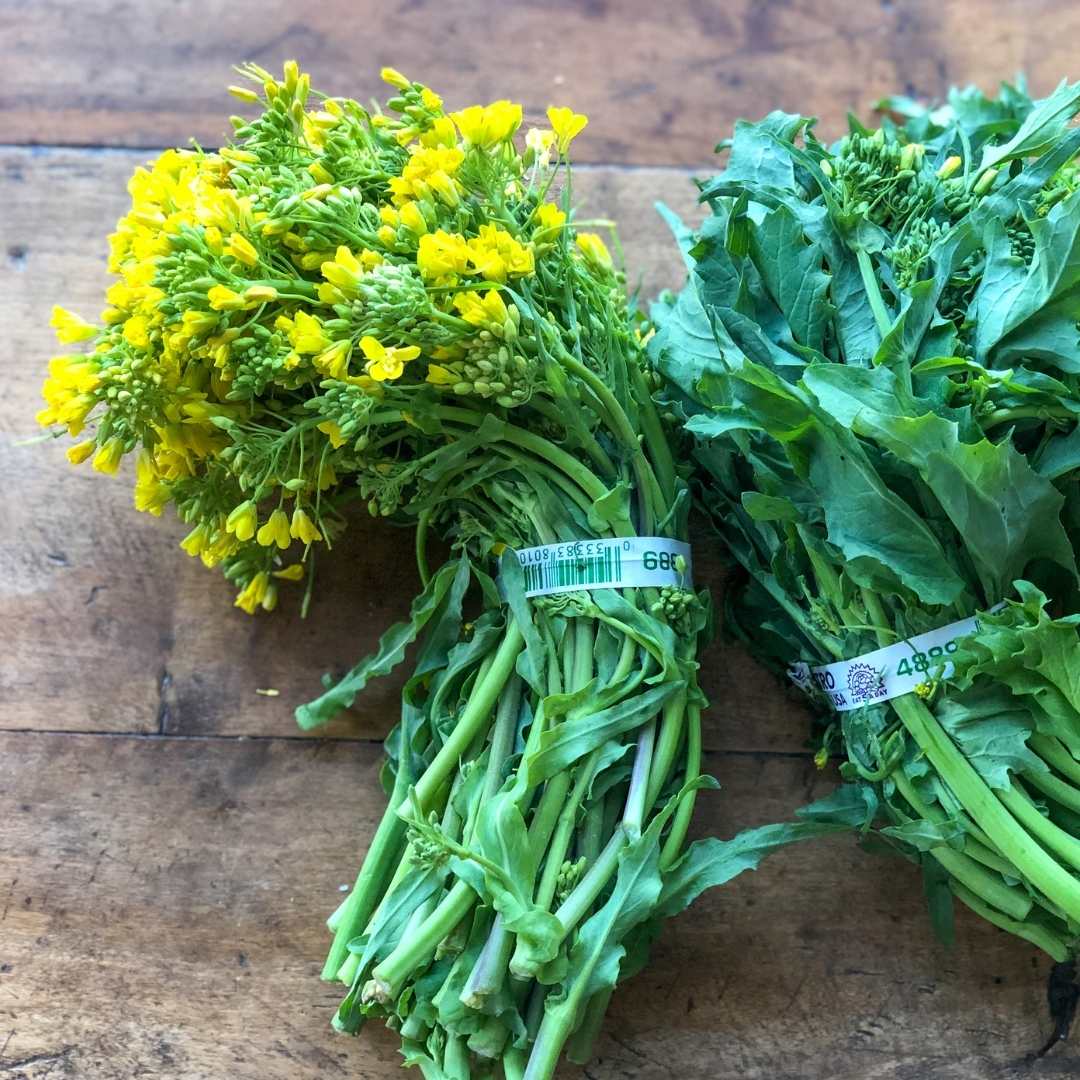Table of Contents
Wondering how to use rapini in your kitchen? I’m answering your top questions about this delicious, healthful veggie, plus sharing a rapini recipe guide.
Have you ever spied a vegetable that looks like a combination of leafy greens and broccoli at your farmers market and wondered what it is? Welcome to rapini!
What is rapini?
Rapini, also known by the name broccoli rabe, broccoletti, and spring raab, is a nutty, bitter, and strong-flavored green that is widely used in Mediterranean cooking. It is classified as part of the mustard family, which includes broccoli, cauliflower, kale, horseradish, and wasabi. That means this vegetable is also part of the healthful cruciferous vegetable family, which has multiple health benefits. Although the appearance of rapini buds, which loosely resemble broccoli, might suggest that the two vegetables are related, rapini is actually more closely related to turnips and bok choy botanically speaking. It may be tough to find rapini in most supermarkets, but you can spy them in farmers markets, and they can be grown quite easily in home gardens in many growing regions.


How to Use Rapini in Cooking
The stalks, leaves, buds, and flowers of the rapini plant are all edible, though the leaves are most commonly used. Additionally, as the plant grows, the stalk may become tougher and should be trimmed before cooking. The leaves are dark green and spiky in shape, and can be added to a variety of different meals (any meal that features leafy greens, really), and the young leaves can even be eaten raw, though they are best enjoyed cooked. When shopping for rapini, look for firm, non-wilted stalks and leaves, and avoid the ones with yellow leaves and a large amount of yellow flowers. The presence of too many yellow flowers indicates that the rapini may be tougher to eat. I like the appearance of some yellow flowers as they add such prettiness to your dishes. You can store them similarly to other leafy greens—just make sure to use them up before they wilt.

Rapini Nutrition
Similar to other leafy green vegetables, rapini is great for you! A 100 gram serving of this tasty vegetable provides 16% of your daily value of vitamin A, 24% of the DV for vitamin C, 21% for folate, and an amazing 213% for vitamin K! In addition, you’ll be getting a nice dose of the minerals calcium, iron, and manganese. And don’t forget all of the phytochemicals found in rapini that can help flight inflammation and oxidative stress.
Top 5 Ways to Use Rapini + Rapini Recipe Guide

1. Sauté to Make a Delicious Side
Add some rapini to a pan, along with olive oil, garlic, and some lemon juice, and sauté just a few minutes until tender yet bright green to make a tasty and nutritious side that complements any meal.

2. Blend into a Green Smoothie
By adding rapini into your morning smoothie blend, you’ll start your day off right with a healthful dose of vitamins and minerals.

3. Stir into a Pasta Dish
The slight bitterness and nuttiness of rapini will complement any savory pasta dish you create. In fact, any pasta recipe that calls for spinach you can substitute in rapini.

4. Use in a Breakfast Dish
Rapini can be used any time of day—so try mixing it into early morning scrambles, breakfast wraps, and green bowls!

5. Add to a Sandwich
Pluck off some young leaves and add to a sandwich for a crunchy, slightly bitter note instead of other leafy greens, or use cooked rapini along with some hummus for a delicious combination of flavors in a grilled veggie sandwich.
For more plant food guides, check out the following:
Written by Kathryn Atkinson, dietetic intern with Sharon Palmer MSFS, RDN





More Stories
Avocado Cacao Mousse – JSHealth
Janelle Brown on Garrison’s Mental Health Before His Death
How To Finally Beat Insomnia